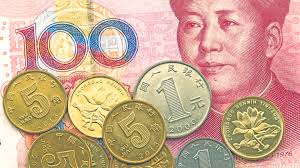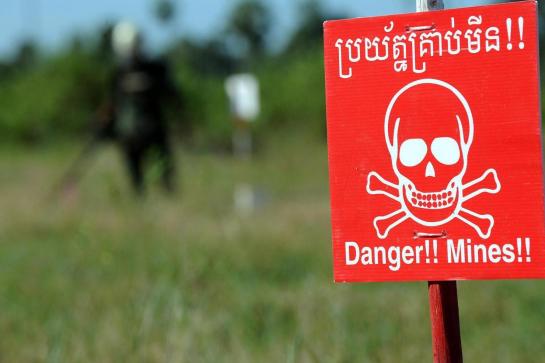
Direct foreign investment from China into Cambodia now outstrips that from all other sources combined. Is this a problem?
Right now the biggest national issue that everyone is talking about in Cambodia must surely be the topic of Chinese investment. Due to sizeable land transfers particularly around Sihanoukvlle, and with the instant-high-rise nature of Phnom Penh there is a strong and palpable perception that China is disenfranchising local Khmer people.
Property and real estate are the leading forms of foreign investment. In part because the effort going into starting an actual new business (such as a clothes or bicycle factory,) is still harder work in Cambodia than in most of its Asian neighbors. The World Bank puts Cambodia 138th on their Ease of Business Index – with neighboring Vietnam 69th and Thailand 27th by comparison. Cambodia lacks clear business laws and is penalised for the level of paperwork required.
So a big hotel is simpler. Sold as a property development – on a land concession made simple by the Government – the advent of Chinese-built hotels, run for Chinese tourists, with minimal wages going to local Khmer staff (who work 12 hour shifts) and with profits going straight back to China is a highly visible form of direct foreign investment that is hardly leading to a wealthier populace.
The Government has already overturned morality based laws (gambling for money is illegal in Cambodia but has been legalised for visitors to the little-Macau Chinese casinos of Sihanoukville.) So much for sovereignty.
Land concessions are also a big part of the perceived problem. Human Rights Watchdog LICADHO estimate that 2 million hectares of land have been made available for developers, local and foreign, but often at the cost to local land owners who have been kicked off their farms.Dispossessed, (as the ABC of Australia reported of farmers who lost their land to a Sofitel development in March 2016) protestors were shot and wounded by armed forces on behalf of the hotel group.
Here is a map detail land concessions across Cambodia. Concession awarded to Chinese interests are marked in red, local interests are in blue while Vietnamese interests are in green. Source map is bigger, clearer and interactive. Click here.

But is Chinese money exposing Cambodia to a future of debt-laden servitude? Right now Cambodia’s foreign debt as a proportion of GDP is relatively modest, though climbing quickly. There are two prices to be paid though. One is the social debt – the idea that Cambodians are becoming, and will remain, in a cheap labour economy.
Then there is the fiscal debt. Here Cambodia needs to watch itself. The question is: who owns the infrastructure. Historically this has always been the business of Government, but China has the capital and human resource to come in and extend the sea port, put in hydro schemes and develop the currently struggling road network – then the ‘rates’ must surely get paid to the country that funded these things.
This from the Hong Kong Trade Development Council website: August 2018.
At the end of last month, Cambodia’s Ministry of Public Works and Transport (MPWT) announced that work had been completed on 2,000 kilometres of new roads, seven major bridges and a container terminal servicing the Phnom Penh Autonomous Port. All these initiatives had largely been backed by the Chinese mainland, with funding provided from within the framework of the Belt and Road Initiative (BRI).
In an article published by the Phnom Penh Post, on March 27th, 2018, journalist Robin Spiess noted that China’s financing and investment of the Belt & Road projects in Cambodia could lead to a significant rise in public debt, and even take it to ‘distress’ levels.
According to a policy paper released by the Center for Global Development, Cambodia will likely see a significant rise in debt to China as a result of the Belt and Road Initiative. At the end of 2016, Cambodia’s total public and publicly guaranteed debt was $6.5 billion, a relatively low percent of the country’s $20 billion GDP. About half of that $6.5 billion debt was owed to China, according to the report.
Miguel Chanco, lead Southeast Asia analyst for the Economist Intelligence Unit (EIU), noted that the report was accurate regarding the risks to Cambodia, but also said any prediction of future debt levels was complicated by the overall lack of transparency of BRI projects.
“Our estimates put the country’s public debt stock at around 35 percent of GDP, which is well below the median for Asean and emerging markets at large,” Chanco said. “Having said that, I am concerned about the lack of transparency in many of China’s projects in Cambodia, as it makes it difficult to determine the latter’s overall sovereign debt commitments.”
Publicly declared projects at the end of 2016 were predicted to leave Cambodia indebted to China by an additional $3.5 billion though this figure might well be much higher.
One example is China’s proposal to develop over two million kilometers of national expressways [in Cambodia] by 2040”, which is a broad-brush swoop of a figure to begin with, and given the geo-technical engineering risks of building on a flat, sand-based terrain could easily blow out beyond the estimated cost of around $26 billion. A blow-out could leave the Kingdom significantly more in debt to China.
Meanwhile estimates of the national debt to 2020 is less fuzzy.
The EIU forecasted a rapid rise in Cambodia’s external debt in the next few years, according to Chanco. “We expect the country’s total foreign debt stock to rise to $17 billion by 2020,” he said.
Right now Chinese investment hasn’t pushed Cambodian debt prospects over the brink, unless you factor in the very real human rights costs. But in pure money terms Cambodia is going for the quick and easy path to economic growth. It has a long wayto go however, before it becomes an economy – like that of Singapore – where business is easy to conduct and where locals are not in underpaid jobs. Current policy is growing the economy, but it is a recipe for dissatisfaction and a real sense of disenfranchisement.
I write these blogs as an observer of changing Cambodia. I’ve been involved in a small NGO since 2004 back when the tallest building in Phnom Penh was 8 storeys high. I hope expats, volunteers and others in the Cambodian community find these reports useful. I try to compile hard data from credible sources.
Meanwhile: China and the US square-off in dispute over recent history. Click here.








You must be logged in to post a comment.